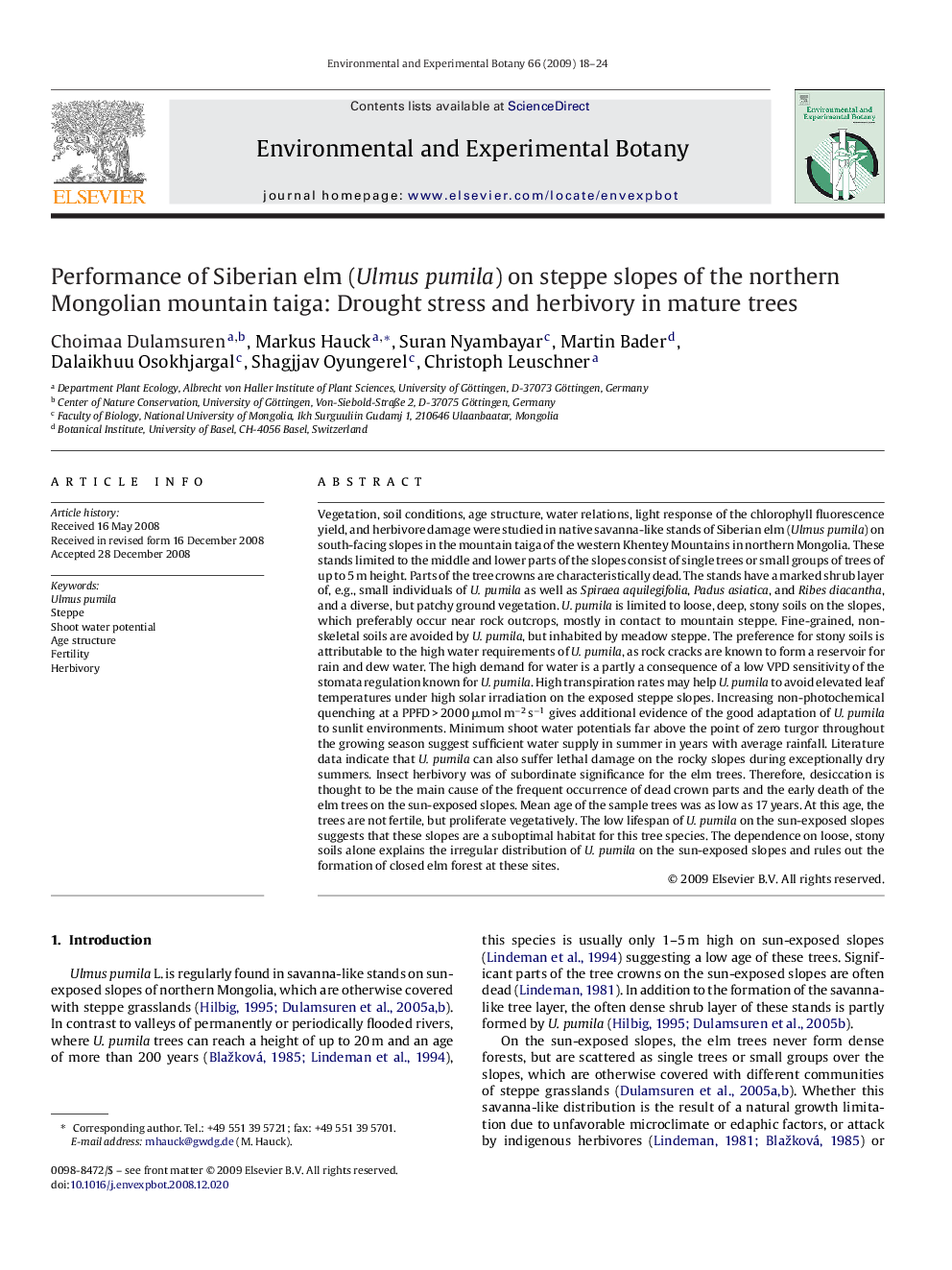| کد مقاله | کد نشریه | سال انتشار | مقاله انگلیسی | نسخه تمام متن |
|---|---|---|---|---|
| 4555070 | 1329242 | 2009 | 7 صفحه PDF | دانلود رایگان |

Vegetation, soil conditions, age structure, water relations, light response of the chlorophyll fluorescence yield, and herbivore damage were studied in native savanna-like stands of Siberian elm (Ulmus pumila) on south-facing slopes in the mountain taiga of the western Khentey Mountains in northern Mongolia. These stands limited to the middle and lower parts of the slopes consist of single trees or small groups of trees of up to 5 m height. Parts of the tree crowns are characteristically dead. The stands have a marked shrub layer of, e.g., small individuals of U. pumila as well as Spiraea aquilegifolia, Padus asiatica, and Ribes diacantha, and a diverse, but patchy ground vegetation. U. pumila is limited to loose, deep, stony soils on the slopes, which preferably occur near rock outcrops, mostly in contact to mountain steppe. Fine-grained, non-skeletal soils are avoided by U. pumila, but inhabited by meadow steppe. The preference for stony soils is attributable to the high water requirements of U. pumila, as rock cracks are known to form a reservoir for rain and dew water. The high demand for water is a partly a consequence of a low VPD sensitivity of the stomata regulation known for U. pumila. High transpiration rates may help U. pumila to avoid elevated leaf temperatures under high solar irradiation on the exposed steppe slopes. Increasing non-photochemical quenching at a PPFD > 2000 μmol m−2 s−1 gives additional evidence of the good adaptation of U. pumila to sunlit environments. Minimum shoot water potentials far above the point of zero turgor throughout the growing season suggest sufficient water supply in summer in years with average rainfall. Literature data indicate that U. pumila can also suffer lethal damage on the rocky slopes during exceptionally dry summers. Insect herbivory was of subordinate significance for the elm trees. Therefore, desiccation is thought to be the main cause of the frequent occurrence of dead crown parts and the early death of the elm trees on the sun-exposed slopes. Mean age of the sample trees was as low as 17 years. At this age, the trees are not fertile, but proliferate vegetatively. The low lifespan of U. pumila on the sun-exposed slopes suggests that these slopes are a suboptimal habitat for this tree species. The dependence on loose, stony soils alone explains the irregular distribution of U. pumila on the sun-exposed slopes and rules out the formation of closed elm forest at these sites.
Journal: Environmental and Experimental Botany - Volume 66, Issue 1, April 2009, Pages 18–24